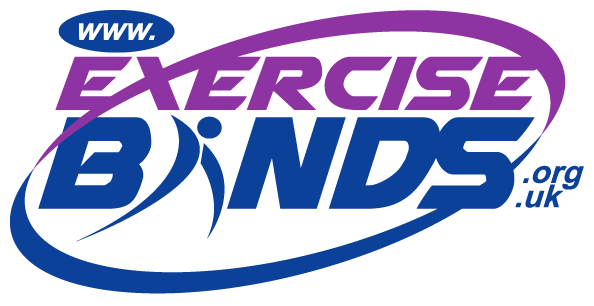Resistance Bands
Resistance Bands are stretchy elastic bands that range in width from 2 to 6 inches. Resistance bands can be bought on a roll and cut to your preferred length, but you will most likely buy them precut. Precut lengths usually run from 3 to 6 feet. The level of “resis-tance” offered in the bands ranges from extra-light to extra-heavy. Many contain latex, so be sure to check the packaging for latex-free if you have an allergy.
A resistance band is not a very effective piece of equipment when jerked quickly. It will actually offer very little resistance, and it will feel like there is little work being done. It encourages you and requires you to move slowly while focusing on the specific muscle groups you’re exercising. It allows you to take advantage of both the concentric and eccentric motions of the exercise, working the muscles for the entire exercise. The bands come in a range of resistances to match the range of weights. These are usually color-coded so it’s easy to tell them apart.
When you cannot make it to the gym or cannot afford a gym membership, resistance bands are a great addition to your at home workout. Studies have shown that resistance bands have similar effects as free weights at the gym. It was actually shown that using resistance bands can reduce more body fat that free weights. Resistance bands can be particularly useful for those that are wheelchair or bed bound to get their much needed exercise.
Incorporating resistance training help to rebuild muscles and increase bone density as well as improve flexibility, agility and coordination .Studies done on women have shown an increase in muscular strength as well as endurance from using resistance bands in their workouts. The study also showed that using resistance bands in your workout will improve your cardio and muscle performance.
Resistance bands are great for rehabilitation as well, especially if you have Osteoarthritis. Using the best resistance bands during leg exercises will help strengthen the hips as well as the knees. A study done on people suffering from Osteoarthritis in the knees showed that using resistance bands during home therapy improved their knee function as well as their stability overall. Another study showed that using resistance bands during hip rehabilitation greatly improved hip function as well as increased the strength of the gluteal muscles.
Professional Occupational therapist have been known to use resistance training for some time via these bands, to ensure they are able to great results for their patients.
Purchasing Equipment and Tax Rebate
While purchasing an entire set of dumbbells to use at home can cost a fortune, a resistance band costs around $10. A Home consumer can even buy a set of bands along with a workout DVD for under $50. Another excellent benefit of resistance bands is that they couldn’t be easier to travel with, so you can use them in hotel rooms, outside at a park, or anywhere you want to get in a quick and effective workout.
Dumbbell users often cheat by lifting the weight with momentum; you can’t do this with resistance bands because of their constant resistance, so you have to use your muscles all the time.
You can work every muscle in your body by using resistance bands. Moreover, you can easily use them anywhere. They’re lightweight and take up hardly any space, making them easy to travel with or use at home, or even behind your desk at work. You can wrap a band around a doorknob, pole, chair, your ankle (for leg exercises) or almost any stable object. Plus, you can adjust the amount of resistance in seconds, quickly moving from one exercise to the next.
Physical and mental health benefits that can be achieved through resistance training include:
- improved muscle strength and tone – to protect your joints from injury
- maintaining flexibility and balance, which can help you remain independent as you age
- weight management and increased muscle-to-fat ratio – as you gain muscle, your body burns more kilojoules when at rest
- may help reduce or prevent cognitive decline in older people
- greater stamina – as you grow stronger, you won’t get tired as easily
- prevention or control of chronic conditions such as diabetes, heart disease, arthritis, back pain, depression and obesity
- pain management
- improved mobility and balance
- improved posture
- decreased risk of injury
- increased bone density and strength and reduced risk of osteoporosis

Recent Comments